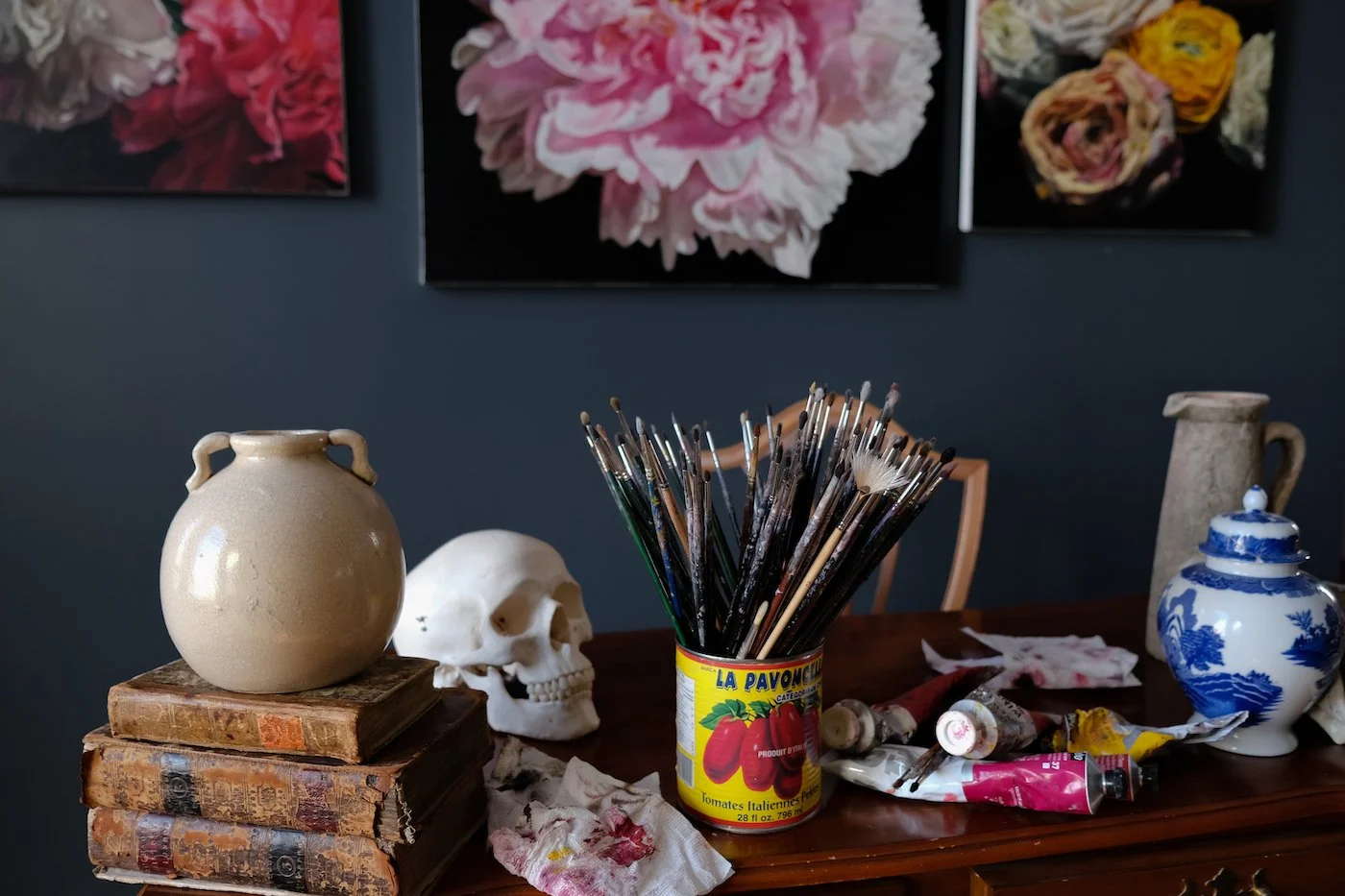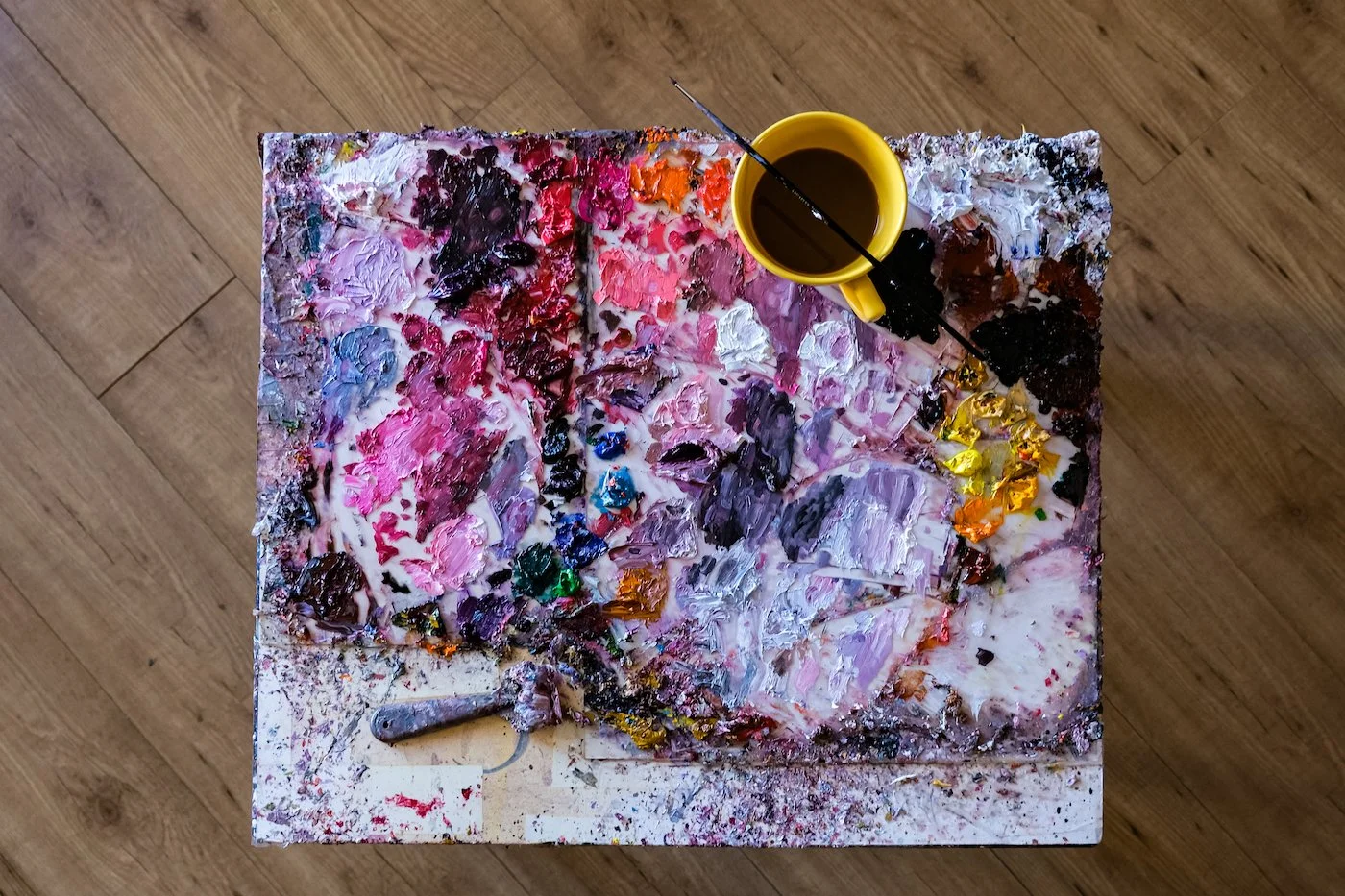Tornados and Truth in the Atelier
I’ve been sitting with the book The Unknown Craftsman: a Japanese Insight into Beauty for a while now. I read it and then I return to an essay I love by Hélène Cixous titled, “Without End,” where she talks about wanting “the tornados in the atelier,” the moment of arrival, the “beforehand of a book.” And then I go and listen to the Jason Isbell song (which might have nothing to do with the aforementioned things but happens to be the phrasing of my recent earworm) with the lyrics:
“If there's one thing I can't stand
It's this bar and this cover band
Trying to fake their way through 'Castles Made of Sand'.
That's one thing I can't stand.”
and
“If there's two things that I hate
It's having to cook and trying to date.
Busting ass all day to play 'hurry up and wait.
That's a few things that I hate.”
I’ve been re-training my brain these last couple of years to remember all the things I LOVE, and to try and spread that love. But once in a while it’s good to CONSIDER THE OPPOSITE and to also have that comedic distance. So it makes me laugh a bit to consider what I hate once in a while. And honestly, bad art is one thing. Sure yah I know, art is subjective. It is, except for…..only to some extent. Of course, it’s hard to talk about as an arty type, because what if my art is the bad art? As Taylor says what if “It’s me Hi I’m the problem, it’s me?” (Granted in another context). And of course, I’m of two minds at times about it all because I do believe the line by Andy Warhol, “Don't think about making art, just get it done. Let everyone else decide if it's good or bad, whether they love it or hate it. While they are deciding, make even more art.” But then there is sometimes SO much to wade through, and fewer critics to weigh in on the various merits of art, that I wonder what happens to our ability to see WELL and to discern. And we would rather not even talk about the pros and cons of AI “art” (which honestly mainly spleens me at this point).
We proceed error by error in our writing rooms, in our studies and in our studios. But also, as Cixous talks about, there is the ecstasy of technique. There is the endless practice, the attention to detail, to form, to the mechanics. The beforehand is work work work. The truth of a piece lies to some extent there. There is the knowing, the accumulating of knowledge regarding the materials, the history of art-making broadly and then super specifically pertaining to the work at hand. And then there is the letting go of all that you know once it’s been absorbed so deeply. It’s not something you hold but something you are. And maybe this sounds a bit flaky. But that’s the point where the beauty leaks, the light seeps, the mystery glows.
Those rough drawings by Da Vinci, and Rembrandt, and Picasso, that Cixous talks about having “secret movement” exist because of the raw talent, yes, but also the endless hours of practice. In the book The Unknown Craftsman, the insights of Sōetsu Yanagi into beauty are excellent because they remind us the stakes for knowing how to appreciate beauty may be higher than we think.
“I feel that the great problem is how to make good things in the present state of society.”
“At this juncture I would put the question, might not beauty and the love of the beautiful, perhaps bring peace and harmony? Could it not carry us forward to new concepts of life’s meaning? Would it not establish a fresh concept of culture? Would it not be a dove of peace between the various cultures of mankind?”
Reading some of Yanagi’s thoughts on beauty and the true, reminded me of my long ago art forger book, Hive.
Yanagi, on judging a work, “more important is whether it is true or false.” The work that is not true, without “innate beauty” is “dead work.” He says, “beauty is a kind of mystery, which is why it cannot be grasped adequately through the intellect.” But he also reminds that the artist, to produce “good work” must “also ally himself closely with the artisan.” Yanagi says, “Beauty is essentially a matter of values; if values are confused, if there are no standards, if valueless things are admitted among the valued, judgements of beauty lose their basis.”
When you live with a painting for a while, it will reveal itself as true or not true. This is what I learned in my study of art forgery. I still think Hive was a pretty decent experimental novel, and that the timing for it wasn’t perfect. Maybe now it would receive a larger or more receptive audience with its themes of truth and detecting falseness. You can’t really tell with your own work often, anyway. Does it still read as “true?” I have no idea. But I do know that writing it tuned me into the ease with which people can be tricked by what is right before their eyes. And all this before the Tr*mp era! Which is to say that it’s always been this way, really.
Can seeing well change the world? How can the love of beauty be a dove of peace when our collective levels of discernment is faded? Nowadays instead of detecting art forgeries, we’re now having to detect what is real and what is AI…And it all still really comes back to that feeling of a work being “off.” So far it’s pretty easy to see that an AI image is not quite right but I suppose it might get more challenging. One thinks of how many people were fooled by Van Meegeren’s Vermeer forgeries, though looking at them now they look rubbish.
I look back at the WJT Mitchell lines from Picture Theory I have been obsessed by since writing ekphrastic poems and teaching courses etc on ekphrasis so long ago in what seems like a former existence, and which is that: in an age of “all-pervasive image-making, we still do not know exactly what pictures are, what their relation to language is, how they operate on the observers and on the world, how their history is to be understood, and what is to be done with or about them.”
I bought the book in November of 1995 and the receipt from The Book Company in Southgate mall is still inside it complete with my 30% off staff discount. And the thing is that I’ve quoted from it over the years and I just find the above lines continue to be even more relevant.
Anyway, what I want to do is think more about all of the preceding, and so thanks for letting me meander on here, and if you’ve made it this far, as they say, haha, thanks for reading!







